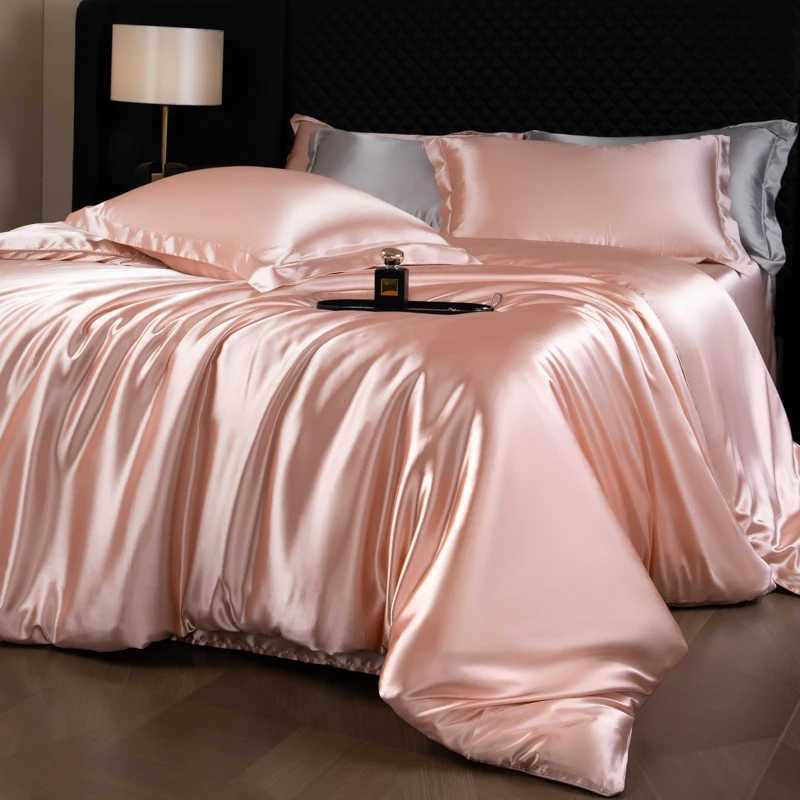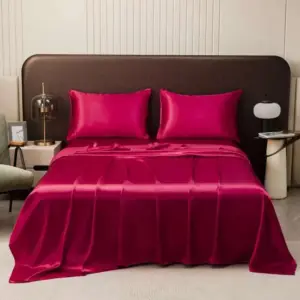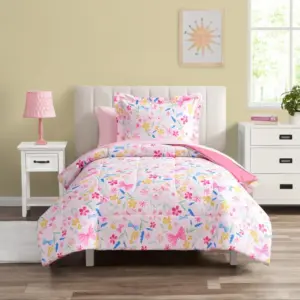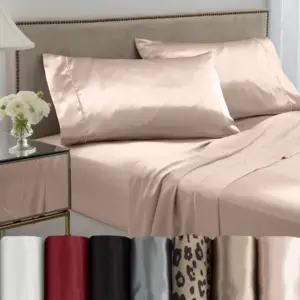Introduction: The Luxurious World of Silk Bedding Textures
Imagine sinking into bed at night, your skin immediately caressed by a cool, smooth surface that feels almost weightless against your body. This is the unique sensation that only silk bedding can provide – a luxurious embrace that has been treasured for over 5,000 years of human history.
What many don’t realize is that “silk bedding” encompasses a remarkable variety of textures and sensations. The silky touch that transforms your nightly rest varies significantly depending on the type of silk fiber used, the pattern of weaving employed, and the density of the fabric (known as momme weight). These variations aren’t merely technical details – they fundamentally impact how your bedding feels against your skin, how it looks on your bed, and how long it will maintain its luxurious properties.
When investing in silk bedding, texture becomes perhaps the most crucial consideration of all. The right texture will complement your sleeping style, maintain your desired temperature, and provide the sensory experience you seek. Understanding different silk weave choices for bedding can transform an ordinary purchase into a personalized luxury experience that enhances your sleep for years to come.
For those new to the world of silk, the ultimate guide to luxury silk bedding provides a comprehensive foundation for understanding this exceptional material. Let’s explore how to identify and select your perfect silk texture for the ultimate sleep sanctuary.
Understanding Silk Varieties: The Foundation of Texture
The journey to finding your perfect silk bedding begins with understanding that not all silk is created equal. The type of silk fiber used forms the foundation of how your bedding will feel against your skin and how it will perform over time.
Mulberry Silk: The Premium Standard
Mulberry silk represents the gold standard for bedding, accounting for approximately 90% of high-end silk products worldwide. This premium material comes from silkworms (Bombyx mori) that feed exclusively on mulberry leaves under carefully controlled conditions. The result is exceptionally uniform, long silk fibers that can reach an impressive 800-1,000 meters from a single cocoon.
The highest quality mulberry silk, designated as 6A grade, features the longest and most consistent fibers. This translates directly into the signature feel that makes mulberry silk so coveted: exceptionally smooth, gloriously soft, and naturally lustrous without appearing artificial. When selecting the best type of silk bedding, mulberry silk consistently emerges as the premium choice for those seeking the quintessential silk experience.
Tussah Silk (Wild Silk)
Unlike its cultivated counterpart, Tussah silk comes from wild silkworms that feed on oak and juniper leaves. This less controlled environment results in shorter fibers (typically 200-300 meters per cocoon) with natural variations in color and texture. Tussah silk offers a distinctively different tactile experience – slightly coarser with a more textured feel that some describe as “rustic luxury.”
While less common in bedding applications, Tussah silk appeals to those seeking a more natural, less processed alternative that still delivers silk’s beneficial properties.
Other Silk Varieties Worth Knowing
For the silk connoisseur, varieties like Eri silk (also known as peace silk or ahimsa silk) and Muga silk offer unique textural alternatives. Eri silk provides a more wool-like texture with exceptional thermal properties, while Muga silk from Assam, India, offers a golden sheen and remarkable durability. These varieties rarely appear in mainstream bedding but can be found in specialized collections.
Understanding these fundamental differences helps explain why mulberry silk dominates the luxury bedding market. For a deeper exploration of these and other varieties, our guide to different silk fabric types provides comprehensive information beyond bedding applications.
The Weaving Process: How Patterns Define Silk’s Feel
Once the type of silk fiber is selected, the weaving technique transforms these raw materials into distinctively different fabric textures, each with unique properties and sensory experiences.
Charmeuse Weave: The Classic Silk Experience
When most people imagine silk bedding, they’re thinking of charmeuse weave. This technically sophisticated warp-faced satin weave creates a fabric with two distinctly different sides. The front face features long floating threads that reflect light brilliantly, creating that iconic lustrous sheen, while the back remains relatively matte.
To the touch, charmeuse offers an exceptionally smooth, cool, somewhat slippery surface that glides effortlessly against skin and hair. This minimal friction makes it particularly beneficial for preventing sleep wrinkles and reducing hair breakage and frizz. Charmeuse silk bedding typically comes in momme weights ranging from 19-25mm, with 22mm and 25mm being most common for premium bedding.
Understanding the differences between charmeuse and habotai silk can help you make a more informed decision based on your texture preferences.
Habotai (Plain) Weave: Natural Simplicity
Habotai silk uses a simple over-under weaving pattern, creating a lightweight fabric with a more consistent texture on both sides. While still soft, habotai offers slightly more grip than charmeuse – it feels crisp yet gentle against the skin.
Visually, habotai displays a more uniform appearance with a subtle, understated sheen rather than dramatic luster. Its excellent breathability makes it particularly suitable for warm sleepers, while its more structured feel appeals to those who prefer bedding that stays more firmly in place. Habotai silk sheets typically come in lighter momme weights, usually between 16-19mm.
Twill Weave: Durable Elegance
Twill weave creates a distinctive diagonal pattern that produces a more substantial feel with a subtle texture while maintaining impressive softness. This weaving technique creates fabric with moderate sheen, elegant drape, and outstanding durability characteristics.
The major benefit of twill weave for bedding is its enhanced resistance to wrinkling and its ability to maintain structural integrity over time. Twill silk typically comes in momme weights between 19-25mm to maximize its durability advantages while preserving comfort.
For those wanting to explore the full spectrum of options, our guide to understanding silk weaves for bedding provides detailed information on these and other specialized patterns.
Decoding Momme Weight: The Density Factor in Silk Texture
Beyond fiber type and weave pattern, momme weight plays a crucial role in determining how your silk bedding will feel and perform. This uniquely silk measurement represents the weight in pounds of a piece of silk measuring 45 inches by 100 yards. While thread count dominates discussions of cotton bedding quality, momme weight is the more relevant indicator for silk.

How Momme Weight Affects Texture
The momme weight directly influences how substantial silk feels in your hand and against your body. Lower momme weights (16-19mm) create lightweight, highly breathable fabrics with a delicate drape and subtle presence. As momme weight increases, the silk becomes increasingly substantial – a 25mm silk has noticeably more body and weight than a 19mm silk, creating a more pronounced luxurious presence on the bed.
Higher momme silk also tends to feel slightly cooler initially to the touch due to greater fabric density, though all silk weights eventually adjust to body temperature. The drape characteristics also change with momme weight – heavier silks settle more dramatically and create more defined folds and contours on the bed.
Common Momme Weights for Bedding
16-19 Momme: These lightweight options offer maximum breathability with a gentle, delicate feel. While less durable than higher weights, they provide an entry-level silk experience at a more accessible price point, typically lasting 2-3 years with proper care.
22 Momme: Widely considered the “sweet spot” for silk bedding, 22mm balances luxurious feel with excellent durability and value. This weight provides substantial hand feel without excessive heaviness and typically lasts 4-5 years with proper care.
25 Momme: Premium silk bedding features this substantial weight that provides an opulent drape, enhanced durability, and maximum luxury. The investment pays off in longevity, with proper care allowing 5-7 years of beautiful use.
30+ Momme: Ultra-luxury territory begins at 30mm and above, creating exceptionally heavy, substantial bedding with maximum durability. While representing a significant investment, these ultra-heavy silks can last a decade or more with proper care.
Our collection of premium mulberry silk bedding sets offers various momme weight options to suit different preferences, while our luxury silk bedding sets feature higher momme weights for those seeking the ultimate indulgence.
The Sensory Experience: A Comparative Guide to Silk Textures
Understanding the technical aspects of silk is important, but the sensory experience ultimately determines your satisfaction. Let’s explore how different silk textures compare across key sensory attributes.
Touch Sensation
The hand feel of different silk weaves creates distinctly different sleep experiences:
Charmeuse provides that classic slippery smoothness that glides against skin without catching or dragging. This minimizes friction, making it ideal for sensitive skin and those concerned about facial sleep wrinkles. The cool initial touch warms quickly to body temperature.
Habotai offers a softer touch with slightly more grip – still smooth but with a bit more purchase against the skin. This can feel more secure to sleepers who dislike the occasional “slippery” feeling of charmeuse.
Twill presents a subtle texture with an underlying softness – you might feel the finest hint of the diagonal pattern against sensitive skin areas, creating a gentle tactile interest while maintaining comfort.
Our silk sheets collection offers these different textural qualities to match your personal preference.
Visual Appeal
The visual characteristics of silk textures vary dramatically:
Charmeuse presents the highest luster level, with dramatic light play and a jewel-like quality that makes colors appear rich and deep. This creates the most opulent visual impact on a bed.
Habotai displays a more subtle glow – less dramatic than charmeuse but still distinctively silk, with colors appearing slightly more matte but still rich.
Twill creates fascinating visual depth through its diagonal pattern, which catches light uniquely across the fabric surface. This creates a more textured visual interest rather than uniform sheen.
Movement and Drape
How silk behaves on your bed impacts both aesthetics and sleep comfort:
Charmeuse drapes with fluid, almost liquid-like movements, conforming closely to body contours during sleep. This creates beautiful cascading folds but may shift more during active sleep.
Habotai presents a lighter, crisper drape with more structure, making it less prone to shifting during sleep but still creating elegant bed presentation.
Twill offers the most stable drape with minimal shifting, maintaining its position well throughout the night while still providing elegant visual texture.
Understanding how silk regulates temperature also helps explain why different textures feel comfortable in various sleeping conditions.
Finding Your Perfect Match: Selection Criteria for Silk Texture
With a foundation in the types, weaves, and weights of silk, you can now assess your personal needs to find your ideal match.
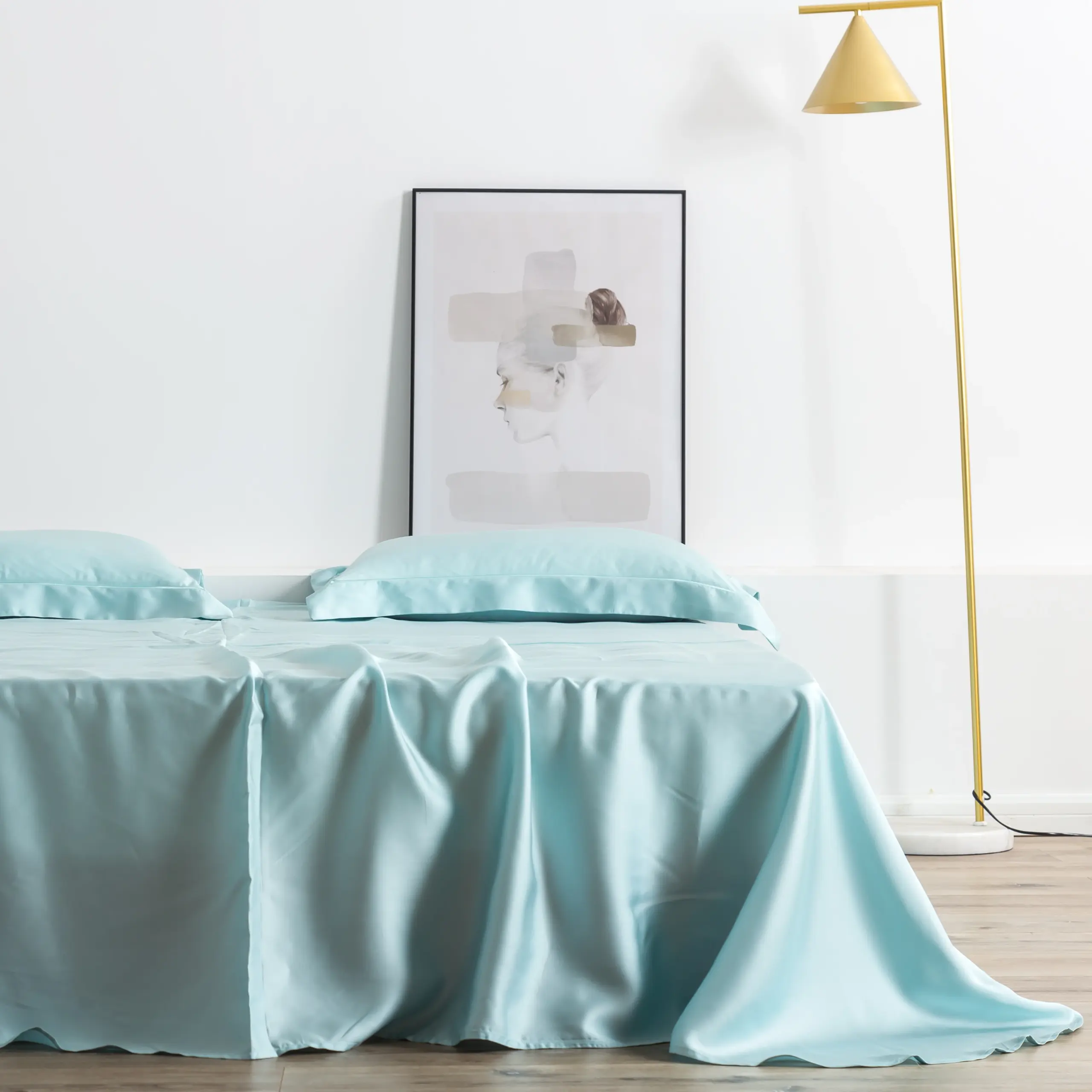
Sleep Style Considerations
Your sleeping position and habits should influence your silk texture selection:
Side sleepers often prefer 22-25mm twill or charmeuse that provides cushioning for pressure points while remaining smooth enough to prevent facial creasing.
Back sleepers typically enjoy charmeuse’s perfectly smooth surface that minimizes friction across larger skin contact areas.
Stomach sleepers may prefer habotai’s lighter weight and breathability, as it creates less pressure on the face and chest.
Hot sleepers benefit from exploring specific silk weave options for hot sleepers that maximize temperature regulation properties.
Active sleepers who move frequently during the night often find twill or habotai stays in place better than very slippery charmeuse.
California King Silk Fitted Sheet, King Size Silk Fitted Sheet, Mulberry Silk Fitted Sheet, Queen Size Silk Fitted Sheet
Price range: $120.04 through $390.79 Select options This product has multiple variants. The options may be chosen on the product pageFull-size Silk Sheets, King Size Silk Sheets, Queen Size Silk Sheets, Twin Size Silk Sheets, Washable Silk Sheets
Price range: $95.95 through $178.37 Select options This product has multiple variants. The options may be chosen on the product page100% Silk Sheets, Green Silk Sheets, King Size Silk Bedding Set, Mulberry Silk Bedding Sets, Queen Size Silk Bedding Set
Price range: $1,246.21 through $1,615.22 Select options This product has multiple variants. The options may be chosen on the product pagePink Silk Sheets, Twin Size Silk Sheets
$171.80 Select options This product has multiple variants. The options may be chosen on the product pageFull-size Silk Sheets, Pink Silk Sheets
$136.31 Select options This product has multiple variants. The options may be chosen on the product pageGrey Silk Sheets, Silk Sheet and Pillowcase Set
Price range: $88.20 through $146.64 Select options This product has multiple variants. The options may be chosen on the product page
Aesthetic Preferences
Your bedroom style and visual preferences matter too:
Modern minimalist spaces often pair beautifully with habotai’s clean, understated sheen or twill’s textural interest.
Glamorous luxury bedrooms call for high-luster charmeuse in rich jewel tones that capture and reflect light dramatically.
Natural/organic aesthetics pair wonderfully with slightly more textured tussah silk or lower-luster habotai weaves.
Consider how light enters your bedroom – spaces with abundant natural light will amplify the sheen differences between weaves, while dimmer rooms may benefit from charmeuse’s superior light-reflecting properties.
Practical Requirements
Practical considerations should also guide your selection:
Maintenance willingness varies by texture – charmeuse typically requires the most careful handling, while twill proves most forgiving.
Budget considerations might lead you toward 19mm weight options as an entry point, with the understanding that higher momme weights generally offer greater durability and longevity.
Family situations matter too – households with children or pets may benefit from twill’s superior durability, while empty nesters might indulge in the pure luxury of high-momme charmeuse.
Our mulberry silk sheets collection offers various textures to accommodate these personal preferences and practical needs.
Beyond Texture: Additional Quality Indicators for Silk Bedding
While texture forms the foundation of your silk bedding experience, several additional quality factors work alongside it to create a truly exceptional product.
Certifications That Matter
Look for bedding with OEKO-TEX® Standard 100 certification, which ensures your silk contains no harmful substances and has been tested for chemical safety. This certification is particularly important since silk lies directly against your skin for extended periods.
BSCI certification indicates ethical production standards were followed, ensuring workers were treated fairly and facilities meet international standards. While these certifications don’t directly affect texture, they ensure your luxurious bedding doesn’t come with hidden environmental or social costs.
Construction Details
Quality silk bedding features meticulous construction details that enhance texture perception:
French seams protect delicate edges while creating smooth transitions between fabric panels.
Generous stitches per inch (10-12 is ideal) create stronger, more durable seams that maintain the fabric’s integrity.
Proper elastic construction for fitted sheets ensures they stay in place without damaging the silk. Our silk fitted sheets feature specially designed corners that maintain tension without stressing the fabric.
Color Processing
The dyeing process significantly impacts silk’s final texture:
Natural dyes often preserve silk’s native protein structure better, resulting in slightly softer hand feel but potentially less color stability.
Modern reactive dyes can maintain vibrant colors while preserving silk’s natural properties when applied correctly.
Undyed natural white silk offers a unique textural experience – slightly softer with maximum breathability since no dye molecules occupy spaces between protein fibers.
Preserving Your Silk’s Luxurious Texture
Once you’ve selected your perfect silk texture, proper care ensures it remains beautiful for years to come.
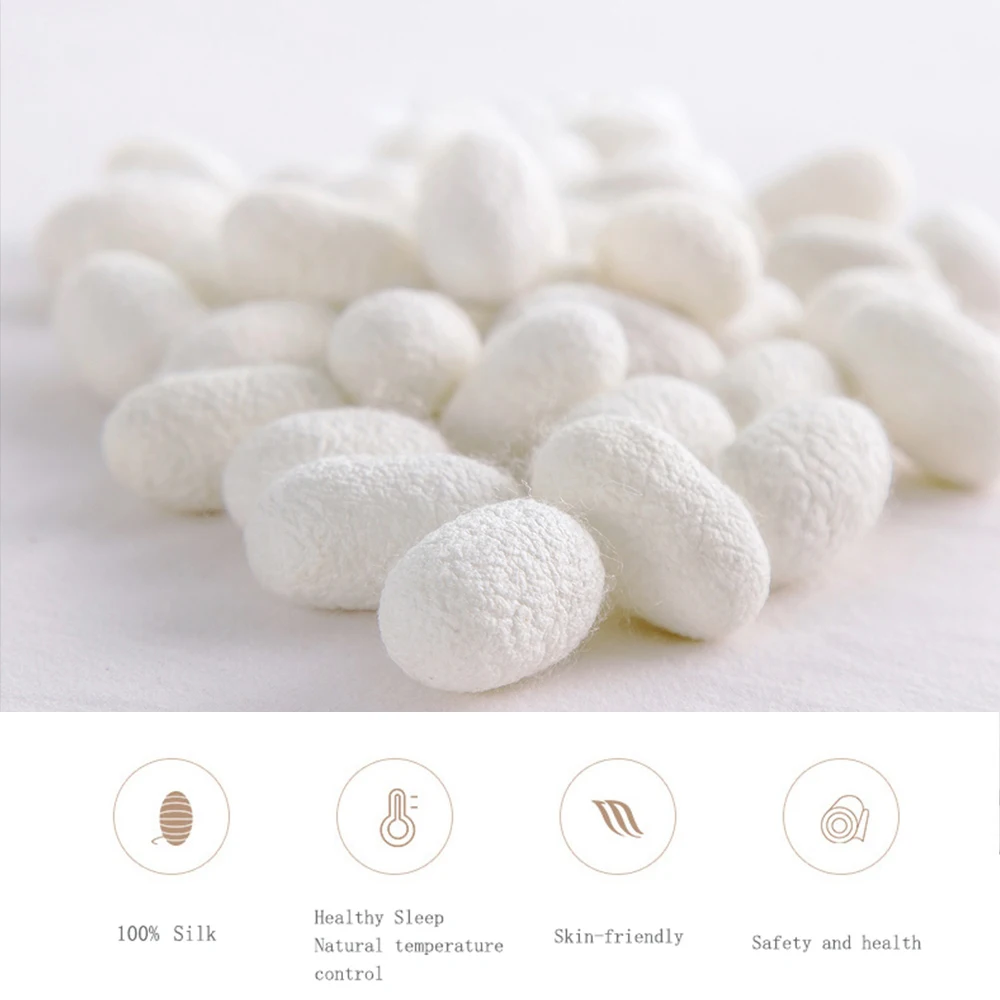
Washing Recommendations
To maintain your silk’s characteristic texture:
- Hand washing is ideal, using lukewarm water (never hot) and a specialized silk detergent.
- If machine washing, use a mesh laundry bag, cold water, and the gentlest cycle available.
- Avoid standard detergents that contain enzymes, brighteners, or bleach that damage silk fibers.
- Rinse thoroughly as soap residue can degrade silk texture over time.
Understanding how to care for different silk weave patterns helps preserve their unique characteristics.
Drying and Storing
Proper drying and storage techniques preserve silk’s luxurious feel:
- Never wring or twist silk; instead, press water out gently between towels.
- Air dry away from direct sunlight, laying flat on a towel or hanging on a non-metal hanger.
- Store in breathable cotton storage bags rather than plastic, which can trap moisture.
- If ironing is necessary, use the lowest silk setting and always iron on the reverse side while still slightly damp.
Texture Restoration
Even well-cared-for silk may occasionally need texture restoration:
- A rinse with a tablespoon of white vinegar in cold water can help restore shine and remove soap buildup.
- Professional dry cleaning occasionally (once yearly) can rejuvenate silk that has become limp.
- If your silk begins to feel rough or loses its characteristic drape, it’s likely time for replacement.
With proper care, quality silk bedding from Sanctuary Soft can maintain its luxurious texture for many years, making it a worthwhile investment in your sleep sanctuary.
Your Questions About Silk Bedding Textures Answered
Does silk bedding get softer over time?
Yes, quality silk bedding typically becomes somewhat softer with proper use and washing. The first 3-5 washes gradually relax the fiber structure slightly without degrading quality. However, unlike cotton which dramatically softens, silk’s change is more subtle – it maintains its fundamental character while developing a lived-in gentleness.
Can silk texture help with skin and hair health?
Silk’s uniquely smooth texture provides measurable benefits for skin and hair. The minimal friction means less pulling on facial skin that can contribute to sleep wrinkles over time. For hair, the smooth surface reduces breakage and frizz by allowing strands to glide freely instead of catching and tangling. These benefits are most pronounced with charmeuse weave’s exceptionally smooth surface.
Is there a significant texture difference between dyed and undyed silk?
There can be subtle differences. Undyed (natural white) silk often feels marginally softer since no dye molecules occupy spaces within the protein structure. Among colored silks, darker, more saturated colors occasionally feel slightly less soft than lighter shades due to greater dye concentration. However, with high-quality silk like that used in Sanctuary Soft products, these differences are minimal and barely perceptible to most people.

